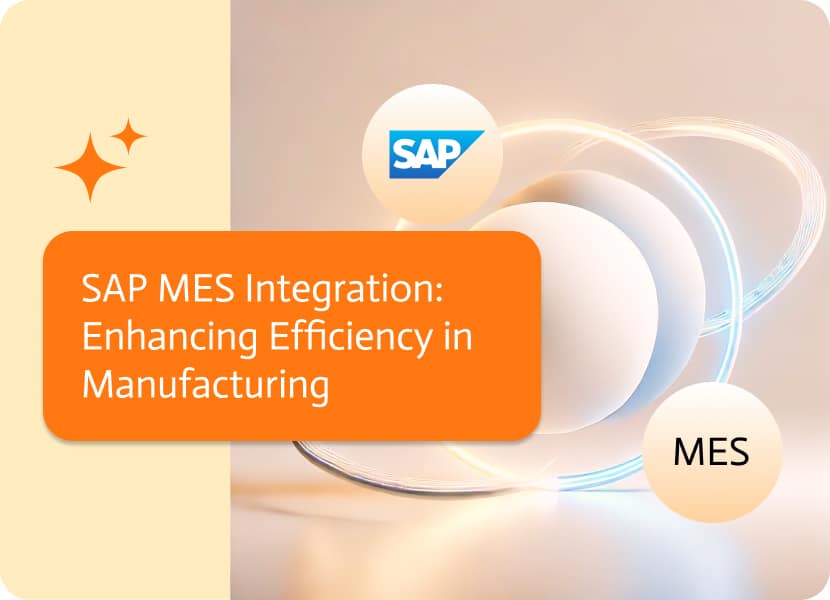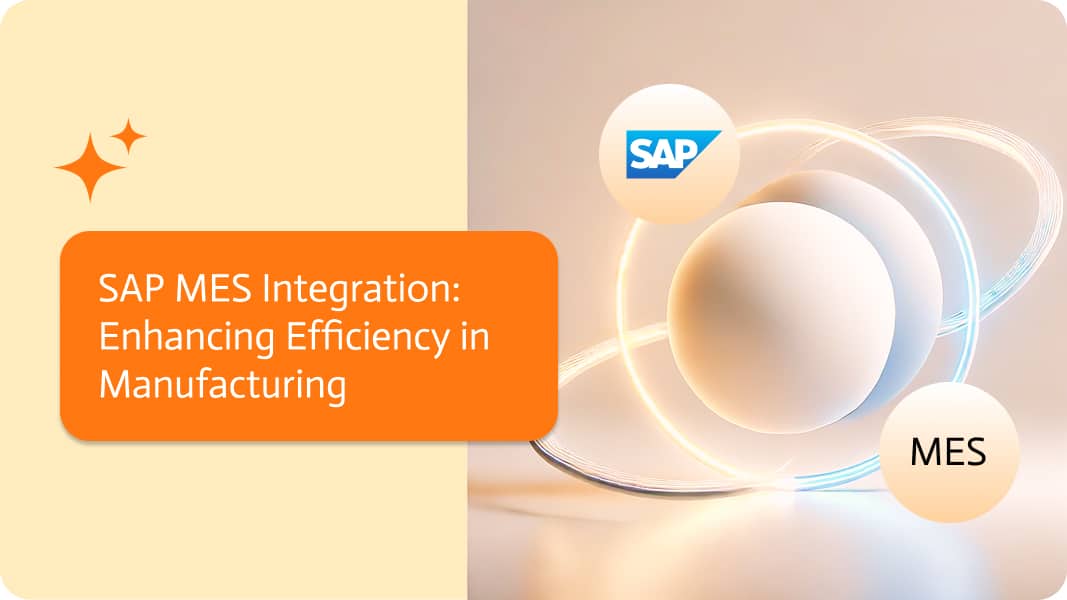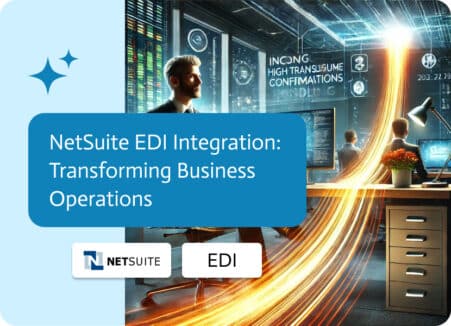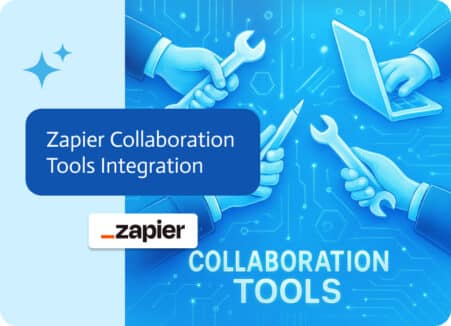

SAP MES Integration: Enhancing Efficiency in Manufacturing
SAP MES Integration bridges the gap between SAP’s Enterprise Resource Planning (ERP) systems and Manufacturing Execution Systems (MES), creating a unified ecosystem that is pivotal for modern manufacturing processes. This integration optimizes operational efficiency, supports real-time data visibility, and empowers informed decision-making, all of which are essential in today’s competitive manufacturing landscape. With the advent of Industry 4.0 and the growing emphasis on smart manufacturing, the integration of SAP with MES has become a critical strategy for organizations aiming to achieve operational excellence.
In this article, we’ll explore the intricacies of SAP MES integration, its benefits, challenges, and best practices, as well as the future trends shaping this space. We will also look at real-life examples and case studies to better understand the impact of this integration on the manufacturing industry.
What is SAP MES Integration?
SAP MES Integration refers to the seamless connection between SAP’s ERP system and a Manufacturing Execution System (MES). SAP ERP manages business processes such as procurement, sales, inventory, and human resources, while MES controls shop floor operations, tracking and managing the execution of manufacturing processes in real-time. By integrating these systems, manufacturers can ensure that both business-level and production-level systems communicate effectively, enabling real-time updates, synchronized operations, and increased visibility across the enterprise.
In a world increasingly driven by data, the integration of MES and ERP is essential to eliminate silos between operational and business systems. This collaboration enables manufacturers to gather real-time data from their production floor and use it to optimize decision-making, resource planning, and overall operational performance.
Key Benefits of SAP MES Integration
The integration of SAP ERP with MES brings numerous benefits to the table. Here are some of the most significant advantages:
1. Improved Operational Efficiency
SAP MES integration helps streamline operations by providing a single source of truth. With seamless data exchange between systems, manufacturers can reduce manual data entry, minimize production delays, and improve resource allocation. This level of automation enables faster reaction times to changes in production schedules and market demand.
For example, if a critical machine on the shop floor breaks down, the MES can immediately relay this information to the ERP system, triggering a new work order or notifying the maintenance team. This ability to react swiftly helps minimize downtime and optimize the use of resources.
2. Real-Time Data Visibility and Decision-Making
One of the standout advantages of integrating SAP with MES is the availability of real-time data. Decision-makers can access live production data such as inventory levels, production output, and machine performance, enabling more informed and timely decisions.
For example, production managers can monitor key performance indicators (KPIs) on dashboards that pull data from both ERP and MES, allowing them to proactively manage potential issues before they affect production.
3. Enhanced Quality Control
The integration supports better quality management by providing real-time monitoring of product quality metrics. For industries with stringent regulatory requirements, such as pharmaceuticals and food manufacturing, this capability ensures compliance and reduces the risk of costly recalls or reworks.
For instance, when defects are detected on the production line, the MES system can immediately notify the ERP system, allowing production to be halted until the issue is resolved. This minimizes waste and ensures that only products meeting the desired quality standards move forward in the process.
4. Cost Savings
By optimizing production workflows, reducing waste, and improving resource utilization, SAP MES integration can lead to significant cost savings. Advanced planning capabilities allow manufacturers to better forecast demand, manage inventory more efficiently, and reduce excess stock levels.
Additionally, the ability to integrate predictive maintenance through MES can reduce unplanned downtime, lower maintenance costs, and extend the life of equipment.
5. Improved Customer Satisfaction
Enhanced production control and quality management have a direct impact on customer satisfaction. Products are delivered on time, with fewer defects, and at a consistent level of quality, all of which help build trust with customers and improve brand loyalty.
Challenges of SAP MES Integration
While the benefits of SAP MES integration are clear, it’s important to acknowledge the challenges that come with implementing this technology. Understanding these obstacles is key to successful integration.
1. Data Inconsistency
One of the most common challenges in SAP MES integration is data inconsistency between the two systems. Differences in how data is captured and stored can lead to discrepancies, especially when it comes to batch data and production details. Establishing a standardized format for data exchange is critical to overcoming this issue.
2. System Compatibility
Integrating two complex systems like SAP ERP and MES can present compatibility issues, particularly if the systems come from different vendors. Ensuring these systems can communicate effectively often requires the use of middleware or custom APIs.
3. Complexity of Integration
The complexity of the integration process can be daunting for organizations, especially those with legacy systems. Configuring the integration and ensuring that it aligns with both business and operational needs requires careful planning, resources, and expertise.
4. Training and Change Management
Introducing a new integrated system requires comprehensive training for employees. Staff need to understand how to use the new system effectively, and this training process can be both time-consuming and costly. To ease the transition, it’s important to offer phased training and ongoing support.
Best Practices for Successful SAP MES Integration
Successfully integrating SAP ERP with MES requires a thoughtful approach. Here are some best practices that can help ensure a smooth and successful integration:
1. Establish Cross-Functional Teams
Building a cross-functional team that includes members from IT, production, and management ensures that the integration aligns with all aspects of the business. This team should oversee the project from planning through to implementation and ensure that all stakeholders are involved.
2. Define Clear Objectives
It’s important to define clear, measurable objectives for the integration. What are the specific pain points you want to address? What KPIs will you use to measure success? Having clear goals will guide the integration process and help track progress.
3. Leverage Middleware Solutions
Middleware platforms, such as SAP Process Integration (SAP PI), play a crucial role in enabling seamless communication between ERP and MES systems. These platforms act as intermediaries, ensuring that data flows efficiently between systems, standardizing formats, and automating processes. Middleware solutions also facilitate integration with third-party systems, enhancing overall operational agility.
When selecting a middleware solution, businesses must carefully consider their integration strategy. Common strategies include custom integrations, vendor-built solutions, and iPaaS platforms, each with distinct advantages and limitations.
- Custom integrations provide the highest level of flexibility, tailoring the integration to meet specific business needs. However, these require significant resources, time, and technical expertise, making them ideal for complex, unique systems but challenging to maintain.
- Vendor-built solutions are pre-configured connectors, often easier and faster to implement, but with limited customization options. These are cost-effective for straightforward workflows but may not scale well with evolving business requirements.
- iPaaS platforms, such as Noca AI, offer a middle ground, providing pre-built connectors and flexible workflows without the need for extensive coding. These platforms support real-time data synchronization and are scalable, secure, and easy to deploy. They also cater to both technical and non-technical users, making them a popular choice for enterprise-level SAP MES integrations.
Middleware solutions, particularly when using iPaaS platforms, allow businesses to streamline integration processes, reduce operational inefficiencies, and improve data accuracy. Choosing the right middleware strategy ensures that the integration effort aligns with the company’s business needs and technical capabilities.
4. Conduct Thorough Testing
Testing is a critical step in the integration process. Rigorous testing should be conducted to ensure that data is flowing correctly between the systems, and any potential issues should be resolved before full deployment.
5. Provide Comprehensive Training
Ensure that all users receive the necessary training to work with the new system. Offer a combination of hands-on training, workshops, and online resources to make the transition as smooth as possible.
Real-Life Examples
To better illustrate the impact of SAP MES integration, let’s look at two real-life case studies:
1. Automotive Industry Case Study
In the automotive sector, a global car manufacturer integrated its SAP ERP system with an MES to streamline production processes across multiple plants. The integration enabled real-time visibility into production status, reduced downtime, and improved coordination between the shop floor and back-office systems. This resulted in a 20% improvement in production efficiency and a significant reduction in waste.
2. Pharmaceutical Industry Case Study
A pharmaceutical company, operating in a highly regulated environment, integrated SAP ERP with MES to ensure compliance with FDA regulations. By enabling real-time tracking of product quality and production data, the integration helped the company avoid costly product recalls and streamline its documentation process, saving millions in compliance costs.
Future Trends in MES Integration
As we move towards a more digitized and interconnected manufacturing environment, several trends are shaping the future of SAP integration.
1. Adoption of AI and Machine Learning
Artificial Intelligence (AI) and Machine Learning (ML) are playing a growing role in MES systems, providing advanced analytics and predictive maintenance capabilities. Integrating these technologies with SAP will further enhance decision-making and operational efficiency.
2. Cloud-Based MES Solutions
The shift towards cloud-based MES systems is gaining momentum, providing manufacturers with greater flexibility and scalability. Cloud-based solutions reduce the need for on-premise infrastructure, making them more cost-effective and easier to deploy across multiple locations.
3. IoT Integration
The Internet of Things (IoT) is becoming increasingly important in manufacturing, enabling real-time data collection from machines and other connected devices. Integrating IoT data into SAP and MES systems allows manufacturers to optimize production processes and improve predictive maintenance.
Conclusion
SAP MES integration is a critical component of modern manufacturing strategies, enabling businesses to streamline operations, improve data visibility, and enhance decision-making capabilities. Despite the challenges, the benefits of integration far outweigh the hurdles, especially for organizations looking to stay competitive in today’s fast-paced manufacturing environment.
By adopting best practices and keeping an eye on emerging trends such as AI, cloud computing, and IoT, manufacturers can ensure that their SAP MES integration efforts not only meet current needs but also position them for future success in the ever-evolving world of Industry 4.0.


